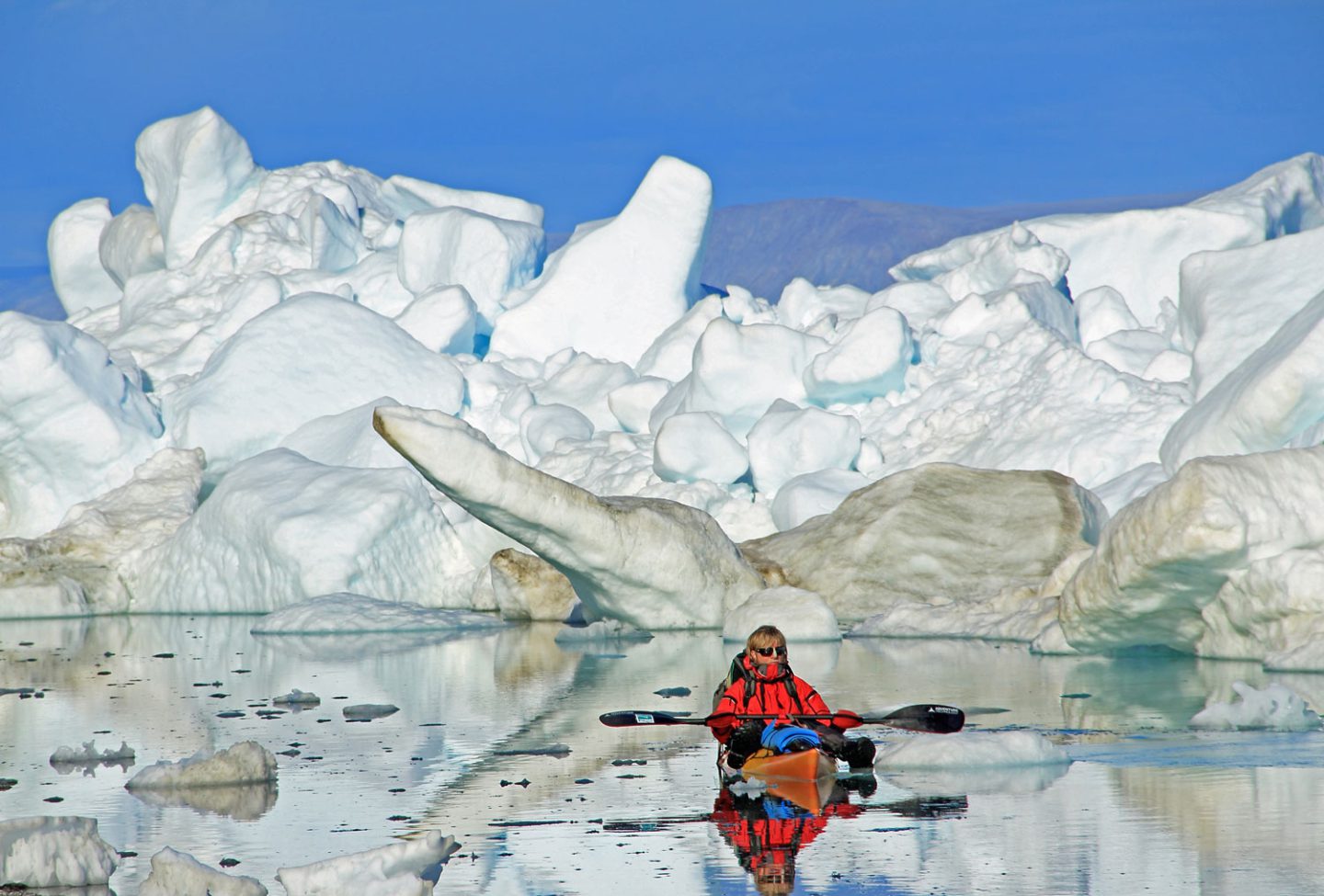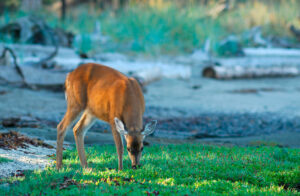
Travel
A tour of the best skiing in the Rockies
Leslie Anthony shares the best of the big hills
- 1847 words
- 8 minutes
This article is over 5 years old and may contain outdated information.
People & Culture

Four years ago, Jon Turk and Erik Boomer circumnavigated Ellesmere Island, Nunavut, using only kayaks and skis on skins. The story of that expedition is now detailed in a soon-to-be-released book that also covers some of Turk’s other, lesser known voyages. In Crocodiles and Ice: A Journey into Deep Wild, available Sept. 15, Turk uses a collection of narratives to explore people’s deep, reciprocal communication with the Earth.
An excerpt from the book is below. The scene opens in camp, on the first night of the Ellesmere Island expedition.
~~~
That night, in the safety of the tent, after Boomer borrowed my superior spoon so he wouldn’t melt the Chinese piece-of-s***, one-time-use, coffee-stirring device that he took from the counter at McDonalds, I had time to assess. Now that reality was staring me in the face, like a mother polar bear with bad breath and two cubs behind her, I concluded that this circumnavigation was a really dumb idea. It’s too far. We don’t have enough food. We’ll wear holes in the bottoms of our kayaks dragging them as far as the distance from New York City to McCook, Nebraska—as if anybody ever wanted to go to McCook. Our kayaks are too small. Too loaded down. Too much weight on the deck. We don’t have the foggiest idea what the ice will be like. My skins are screwed on backwards. Boomer’s spoon is going to break. He’s too young and inexperienced. I’m too old and feeble.
OK, I’m going to wake up in the morning and say, “Hey Boomer, buddy. Sorry about this. All the planning and anticipation and all. Don’t mean to disappoint you, but I’m going home.”
I slept fitfully, and in the morning, tried to hide the internal tension by bouncing out of my sleeping bag into the cold, to start the stove, priming it just right, with not too much or too little fuel. I slid into the familiar routine, repeated so often in my life on mountains and by tumultuous seas. I watched the oatmeal bubble and adjusted the flame carefully. Boomer was cheery, enthusiastic, and excited and I loved the guy, already, with his mix of boyish innocence and deadly focus. I didn’t have the heart to tell him that I was ready to surrender to anticipation of hardship before any hardship actualized. I didn’t have the heart to tell myself that I was prepared to quit, before the expedition began. We broke camp in silence. Boomer adjusted his harness, stepped into his skis, and took off while I was still fiddling with my gear.

I was rested, with only one day of travel behind me. It was going to be easy to put my left foot in front of my right on flat sea ice and proceed sixty centimeters, even though it would be inefficient because my skins were screwed on backwards. And the sixty centimeters after that was a no-brainer as well, and the step after that.
After less than a hundred meters, as I was rushing to catch up, Boomer stopped to inspect fresh polar bear tracks. The monstrous animal had passed close to our tent, during the night, on broad, flat, snowshoe-paws that were made to carry a heavy, deadly predator efficiently over soft surfaces.
In Faulkner’s classic novella, The Bear, the boy asks the old man, “You mean he (the bear) already knows me, that I ain’t never been to the big bottom before, ain’t had time to find out yet whether I…” Then after a moment, the boy continued, “It was me he was watching. I don’t reckon he did need to come but once.”
With my eyes, I followed the bear tracks across the ice and suddenly every block of pressure ridge appeared as a white bear, or a bear with cubs, or a piece of ice with a bear behind it. “It was me he was watching.”

Faulkner again: “So I will have to see him, [the boy] thought, without dread or even hope. I will have to look at him.” (The italics are Faulkner’s, not mine.)
And then I knew, with absolute certainty, that somewhere, out on this ice, or on the ocean after the ice melts, Boomer and I will meet him.
In this case the pronoun, “Him” was the living, breathing bear with one mangled foot, because he had already been wounded by civilization’s steel traps. But, more importantly, “Him” was the wilderness, also living and breathing, crippled but still powerful and primordial.
In my interpretation, when the boy says, “I will have to see him…I will have to look at him…” he is clearly talking about a much deeper interaction than mere vision, it is about feeling the environment at a deep visceral level. It is about smelling the polar bear’s stale-seal-meat-breath, and telling him to Bugger Off, even while you are honoring the Bear Spirit that has paid you a visit. Expeditions are about real and metaphorical passages over the ice, ducks skimming over the water, walrus attacks—embracing our own powerlessness—the cold, the sore toes, and swollen feet—passing into the zone beyond willpower—striving individually to survive, while at the same time revering the Bear Spirit and the Ice Spirit that might easily kill you in an instant. There is no turning back. No other way.

Are you passionate about Canadian geography?
You can support Canadian Geographic in 3 ways:

Travel
Leslie Anthony shares the best of the big hills

Wildlife
Our love of deer runs deep. But as their numbers surge and damage mounts, it may be time for a reckoning.

People & Culture
Naming leads to knowing, which leads to understanding. Residents of a small British Columbia island take to the forests and beaches to connect with their nonhuman neighbours

People & Culture
The story of how a critically endangered Indigenous language can be saved